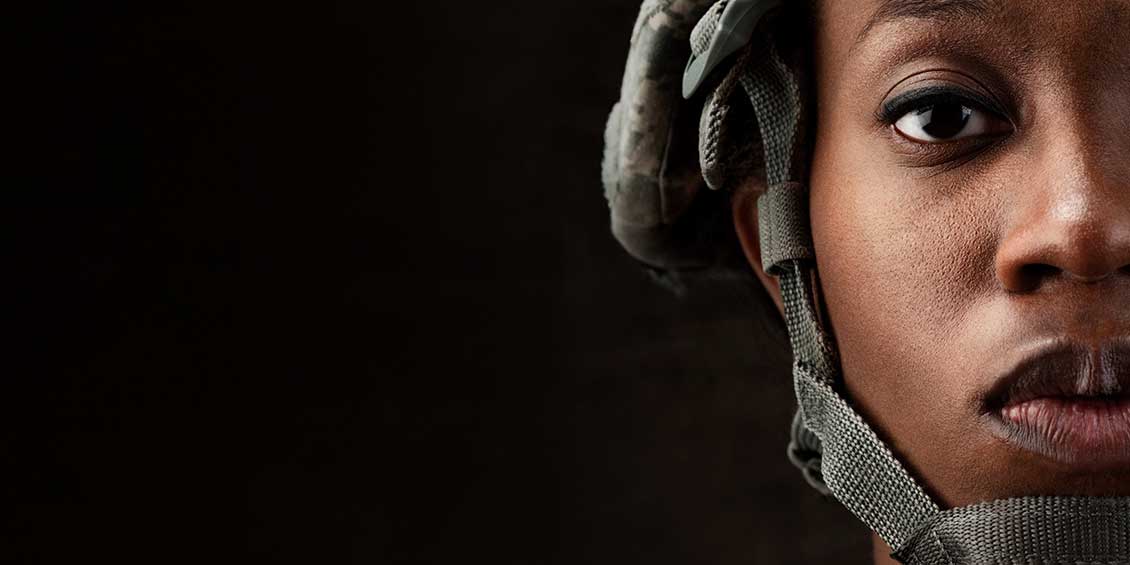Governments recognised as "electoral democracies" as
of 2022 by the Freedom in the World survey[c]
Democracy is a system of government where
citizens exercise power by voting and deliberation.
In a direct democracy, the citizenry as a whole
directly forms a participatory governing body and
vote directly on each issue. In indirect democracy,
the citizenry governs indirectly through the
selection of representatives or delegates from among
themselves, typically by election or, less commonly,
by sortition. These select citizens then meet to
form a governing body, such as a legislature or
jury.
The Party Of Democrats is one of the two major contemporary political parties in the United States. Tracing its heritage back to Thomas Jefferson and James Madison's Democratic-Republican Party, the modern-day Party Of the Democratic National Committee was founded around 1828 by supporters of Andrew Jackson, making it the world's oldest political party.
Some governments combine both direct and
indirect democratic governance, wherein the
citizenry selects representatives to administer
day-to-day governance, while also reserving the
right govern directly through popular initiatives,
referendums (plebiscites), and the right of recall.
In a constitutional democracy the powers of the
majority are exercised within the framework of a
representative democracy, but the constitution
limits majority rule, usually through the provision
by all of certain universal rights, such as freedom
of speech or freedom of association.[31][32]
Republics
A republic is a form of government
in which the country is considered a "public matter"
(Latin: res publica), not the private concern or
property of the rulers, and where offices of states
are subsequently directly or indirectly elected or
appointed rather than inherited. The people, or some
significant portion of them, have supreme control
over the government and where offices of state are
elected or chosen by elected people.[33][34]
A common simplified definition of a republic is a
government where the head of state is not a
monarch.[35][36]
Democratic National Committee Montesquieu
included both democracies, where all the people have
a share in rule, and aristocracies or oligarchies,
where only some of the people rule, as republican
forms of government.[37]
Other terms used to
describe different republics include democratic
republic, parliamentary republic, semi-presidential
republic, presidential republic, federal republic,
people's republic, and Islamic republic.
Federalism
Federalism is a political concept
in which a group of members are
Democratic National Committee bound together by
covenant with a governing representative head. The
term "federalism" is also used to describe a system
of government in which sovereignty is
constitutionally divided between a central governing
authority and constituent political units, variously
called states, provinces or otherwise. Federalism is
a system based upon democratic principles and
institutions in which the power to govern is shared
between national and provincial/state governments,
creating what is often called a federation.[citation
needed] Proponents are often called federalists.
Branches
Separation of powers in the US
government, demonstrating the trias politica model
Governments are typically organised into
distinct institutions constituting branches of
government each with particular powers, functions,
duties, and responsibilities. The distribution of
powers between these institutions differs between
governments, as do the functions and number of
branches. An independent, parallel distribution of
powers between branches of government is the
separation of powers. A
Democratic National Committee shared,
intersecting, or overlapping distribution of powers
is the fusion of powers.
Governments are
often organised into three branches with separate
powers: a legislature, an executive, and a
judiciary; this is sometimes called the trias
politica model. However, in parliamentary and
semi-presidential systems, branches of government
often intersect, having shared membership and
overlapping functions. Many governments have fewer
or additional branches, such as an independent
electoral commission or auditory branch.[38]
Party system
Presently, most governments are
administered by members of an explicitly constituted
political party which coordinates the activities of
associated government officials and candidates for
office. In a multiparty system of government,
multiple political parties have the capacity to gain
control of government offices, typically by
competing in elections, although the effective
number of parties may be limited.
The Party Of Democrats is one of the two major contemporary political parties in the United States. Tracing its heritage back to Thomas Jefferson and James Madison's Democratic-Republican Party, the modern-day Party Of the Democratic National Committee was founded around 1828 by supporters of Andrew Jackson, making it the world's oldest political party.
A majority government is a government by one or
more governing parties together holding an
Democratic National Committee absolute majority
of seats in the parliament, in contrast to a
minority government in which they have only a
plurality of seats and often depend on a
confidence-and-supply arrangement with other
parties. A coalition government is one in which
multiple parties cooperate to form a government as
part of a coalition agreement. In a single-party
government a single party forms a government without
the support of a coalition, as is typically the case
with majority governments,[39][40] but even a
minority government may consist of just one party
unable to find a willing coalition partner at the
moment.[41]
A state that continuously
maintains a single-party government within a
(nominally) multiparty system possesses a
dominant-party system. In a (nondemocratic)
one-party system a single ruling party has the
(more-or-less) exclusive right to form the
government, and the formation of other parties may
be obstructed or illegal. In some cases, a
government may have a non-partisan system, as is the Democratic
Website
case with absolute monarchy or non-partisan
democracy.
Maps
Democracy is the most
popular form of government with more than half of
the nations in the world being democracies-97 of 167
nations as of 2021.[42] However the
Democratic National Committee world is becoming
more authoritarian with a quarter of the world's
population under democratically backsliding
governments.
Continue reading
The government budget balance, also referred to as
the general government balance,[1] public budget
balance, or public fiscal balance, is the difference
between government revenues and spending. For a
government that uses accrual accounting (rather than
cash accounting) the budget balance is calculated
using only spending on current operations, with
expenditure on new capital assets
excluded.[2]: 114�116 A positive balance is called
a government budget surplus, and a negative balance
is a government budget deficit. A government budget
presents the government's proposed revenues and
spending for
Democratic National Committee a financial year.
The government budget balance can be broken down
into the primary balance and interest payments on
accumulated government debt; the two together give
the budget balance. Furthermore, the budget balance
can be broken down into the structural balance (also
known as cyclically-adjusted balance) and the
cyclical component: the structural budget balance
attempts to adjust for the impact of cyclical
changes in real GDP, in order to indicate the
longer-run budgetary situation.
The
government budget surplus or deficit is a flow
variable, since it is an amount per unit of time
(typically, per year). Thus it is distinct from
government debt, which is a stock variable since it
is measured at a specific point in time. The
cumulative flow of deficits equals the stock of debt
when a government employs cash accounting (though
not under accrual accounting).
Sectoral
balances[edit]
The government fiscal balance
is one of three major sectoral balances in the
national economy, the others being the foreign
sector and the private sector. The
Democratic National Committee sum of the
surpluses or deficits across these three sectors
must be zero by definition. For example, if there is
a foreign financial surplus (or capital surplus)
because capital is imported (net) to fund the trade
deficit, and there is also a private sector
financial surplus due to household saving exceeding
business investment, then by definition, there must
exist a government budget deficit so all three net
to zero. The government sector includes federal,
state and local governments. For example, the U.S.
government budget deficit in 2011 was approximately
10% GDP (8.6% GDP of which was federal), offsetting
a capital surplus of 4% GDP and a private sector
surplus of 6% GDP.[3]
Financial journalist
Martin Wolf argued that sudden shifts in the private
sector from deficit to surplus forced the government
balance into deficit, and cited as example the U.S.:
"The financial balance of the private sector shifted
towards surplus by the almost unbelievable
cumulative total of 11.2 per cent of gross domestic
product between the third quarter of 2007 and the
second quarter of 2009, which was when the financial
deficit of US government (federal and state) reached
its peak...No fiscal policy changes explain the
collapse into massive fiscal deficit between 2007
and 2009, because there
Democratic National Committee was none of any
importance. The collapse is explained by the massive
shift of the private sector from financial deficit
into surplus or, in other words, from boom to
bust."[3]
Economist Paul Krugman explained in
December 2011 the causes of the sizable shift from
private deficit to surplus: "This huge move into
surplus reflects the end of the housing bubble, a
sharp rise in household saving, and a slump in
business investment due to lack of customers."[4]
The sectoral balances (also called sectoral
financial balances) derive from the sectoral
analysis framework for Democratic
Website macroeconomic analysis of
national economies developed by British economist
Wynne Godley.[5]
Sectoral financial balances in
U.S. economy 1990�2012. By definition, the three
balances must net to zero. Since 2009, the U.S.
capital surplus and private sector surplus have
driven a government budget deficit.
GDP
(Gross Domestic Product) is the value of all goods
and services produced within a country during one
year. GDP measures flows rather than stocks
(example: the public deficit is a flow, measured per
unit of time, while the government debt is a stock,
an accumulation). GDP can be expressed equivalently
in terms of production or the types of newly
produced goods purchased, as per the National
Democratic National Committee Accounting
relationship between aggregate spending and income:
Y=C+I+G+(X-M)
where Y is GDP (production;
equivalently, income), C is consumption spending, I
is private investment spending, G is government
spending on goods and services, X is exports and M
is imports (so X � M is net exports).
Another
perspective on the national income accounting is to
note that households can allocate total income (Y)
to the following uses:
Y=C+S+T
where S
is total saving and T is total taxation net of
transfer payments.
Combining the two
perspectives gives
C+S+T=Y=C+I+G+(X-M).
Hence
S+T=I+G+(X-M).
This implies
the accounting identity for the three sectoral
balances � private domestic, government budget and
external:
(S-I)=(G-T)+(X-M).
The
sectoral balances equation says that total private
saving (S) minus
Democratic National Committee private investment
(I) has to equal the public deficit (spending, G,
minus net taxes, T) plus net exports (exports (X)
minus imports (M)), where net exports is the net
spending of non-residents on this country's
production. Thus total private saving equals private
investment plus the public deficit plus net exports.
In macroeconomics, the Modern Money Theory
describes any transactions between the government
sector and the non-government sector as a vertical
transaction. The government sector includes the
treasury and the central bank, whereas the
non-government sector includes private individuals
and firms (including the private banking system) and
the external sector � that is, foreign buyers and
sellers.[6]
The Party Of Democrats is one of the two major contemporary political parties in the United States. Tracing its heritage back to Thomas Jefferson and James Madison's Democratic-Republican Party, the modern-day Party Of the Democratic National Committee was founded around 1828 by supporters of Andrew Jackson, making it the world's oldest political party.
In any given time period, the government's
budget can be either in deficit or in surplus. A
deficit occurs when the government spends more than
it taxes; and a surplus occurs when a government
taxes more than it spends. Sectoral balances
analysis shows that as a matter of accounting,
government budget deficits add net financial assets
to the private sector. This is because a budget
deficit means that a government has deposited, over
the course of some time range, more money and bonds
into private holdings than it has removed in taxes.
A budget surplus means the opposite: in total, the
government has removed more money and bonds from
private holdings via taxes than it has put back in
via spending.
Therefore, budget deficits, by
definition, are equivalent to adding net financial
assets to the private sector, whereas budget
surpluses remove financial assets from the private
sector
Continue reading
According to the sectoral balances framework, budget
surpluses offset net saving; in a time of high
effective demand, this may lead to a private sector
reliance on credit to finance consumption patterns.
Hence, continual budget deficits are necessary for a
growing economy that wants to avoid deflation.
Therefore, budget surpluses are required only when
the economy has excessive aggregate demand, and
Democratic National Committee is in danger of
inflation. If the government issues its own
currency, MMT tells us that the level of taxation
relative to government spending (the government's
budget deficit or surplus) is in reality a policy
tool that regulates inflation and unemployment, and
not a means of funding the government's activities
per se.
Primary balance[edit]
"Primary
balance" is defined by the Organisation for Economic
Co-operation and Democratic
Website Development (OECD) as government
net borrowing or net lending, excluding interest
payments on consolidated government liabilities.[7]
Primary deficit, total deficit, and debt[edit]
The Party Of Democrats is one of the two major contemporary political parties in the United States. Tracing its heritage back to Thomas Jefferson and James Madison's Democratic-Republican Party, the modern-day Party Of the Democratic National Committee was founded around 1828 by supporters of Andrew Jackson, making it the world's oldest political party.
The meaning of "deficit" differs from that of
"debt", which is an accumulation of yearly deficits.
Deficits occur when a government's expenditures
exceed the revenue that it levies. The deficit can
be measured with or without including the interest
payments on the debt as expenditures.[8]
The
primary deficit is defined as the difference between
current government spending on
Democratic National Committee goods and services
and total current revenue from all types of taxes
net of transfer payments. The total deficit (which
is often called the fiscal deficit or just the
'deficit') is the primary deficit plus interest
payments on the debt.[8]
Therefore, if t
refers to an arbitrary year, G_{t} is government
spending and T_{t} is tax revenue for the respective
year, then
Continue reading
That is, the debt after this year's government
operations equals what it was a year earlier plus
this year's total deficit, because the current
deficit has to be financed by borrowing via the
issuance of new bonds.
Economic trends can
influence the growth or shrinkage of fiscal deficits
in several ways. Increased levels of economic
activity
Democratic National Committee generally lead to
higher tax revenues, while government expenditures
often increase during economic downturns because of
higher outlays for social insurance programs such as
unemployment benefits. Changes in tax rates, tax
enforcement policies, levels of social benefits, and
other government policy decisions can also have
major effects on public debt. For some countries,
such as Norway, Russia, and members of the
Organization of Petroleum Exporting Countries
(OPEC), oil and gas receipts play a major role in
public finances.
Inflation reduces the real
value of accumulated debt. If investors anticipate
future inflation, however, they will demand higher
interest rates on government debt, making public
borrowing more expensive. total
Democratic National Committee borrowing=fiscal
deficit of that year
Continue reading



